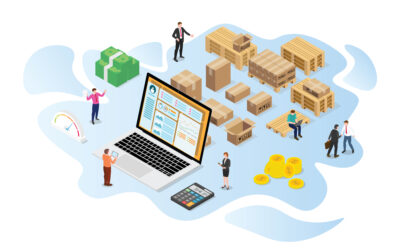itemit is an app owned and developed by RedBite Solutions. RedBite is a spin-out of the University Of Cambridge’s Auto-ID centre, which wrote the international standards for RFID and coined the term “IoT”. As such, we’re experts in the field of asset tracking.
This is why we’re looking into the benefits of NFTs, blockchain and cryptocurrency and their integrations into asset tracking capabilities.
What Is The IoT?
Instead of finding websites on this internet or pages or videos, you find assets or, more accurately, digital representations of assets. Therefore, you’ll find laptops, books, phones, desks, chairs, every physical asset or, “thing”.
Or, we believe you should. RedBite’s overall vision is to make every physical asset on Earth smarter. If anyone notices a problem with a street light while they’re driving past, using the IoT they’ll be able to log an issue, as they can access this light’s digital copy and report an issue against this. Then, the local council will receive this issue. This only works if the light has been logged and exists on the IoT, however.
This is where RedBite’s app, itemit, comes in. With itemit, creating digital copies of assets is simple for the user. Then, reporting an issue is simple. But this is just one app…
How Does Blockchain Improve Asset Tracking Operations?
The only way the Internet of Things can work is with an element of immutability and with an element of decentralised data collection or use – otherwise, you get a mess of asset changes where you pass a bench on the street and someone has changed its record to as an alsatian.
However, this is only scratching the surface of the need for immutability and decentralisation. Without decentralisation, a single app cannot scale to global asset use and contain the relevant, confidential, and critical asset data that individuals need to maintain.
It is possible to scale the system to social media levels of each asset having a profile in technical terms, but this creates a whole host of data risks that blockchain and decentralisation remove. Otherwise, confidential government data is held on the same system as personal data, which is held on the same system as every other asset in between.
Then, as reported data is immutable, issues reported on assets is unchangeable and cannot be manipulated. This does good for the world as once someone reports a risk on building cladding, that cannot be hidden, suppressed, or manipulated. It’s there, visible, and unchangeable.
How Are NFTs Related To Assets?
In other words, if you buy twenty laptops of the same make and model, you’re buying twenty laptops, you’re not buying one laptop twenty times. Each laptop is unique and will have unique scratches, changes, fingerprints over the years.
Therefore, an asset can be tokenised into an NFT as you have one unique laptop and that’s a unique token. Paradoxically, some assets can be more unique than others, too, which gives inherent value to asset NFTs.
For example, a generated NFT of a laptop’s digital IoT profile will be less valuable than an NFT of a celebrity’s laptop will be less valuable than an NFT of a priceless painting.
How is this funded, used, created, and maintained? It all requires immutability, cryptocurrency, blockchain and decentralisation. So, this is why we’re marrying the above concepts.
In turn, the generation, sale, and purchasing of NFTs using cryptocurrency incentivise the growth and creation of the Internet of Things as every single asset that is tokenised is transferred into a single, permanent record.
All that’s left to do is for this system to grow, adapt, and take on a world of its own.
itemit Token
Choose a better way to track your assets
Start your free 14-day trial now
Instant access. No credit card details required.
You can also start your 14-day free trial by filling out the form below, or you can contact us at team@itemit.com or at 01223 421611.
Or, you can check out these blogs:
What Are the Best Asset Management Tracking Tools?
3 Ways Fixed Asset Tracking Software Saves you Time and Money
How to Track Maintenance with Heavy Equipment Maintenance Software
Latest posts
itemit Blog
Tips, guides, industry best practices, and news.
Latest posts
itemit Blog
Tips, guides, industry best practices, and news.
Related articles
Exploring Different Types of Inventory and Their Impact on Asset Tracking
Learn about the 4 types of inventory—raw materials, WIP, finished goods, and MRO—and their impact on asset tracking. Discover strategies for better inventory management.
Inventory Planning Best Practices: Avoid Stockouts and Overages with Asset Tracking
Discover inventory planning best practices to avoid stockouts and overages. Learn how asset tracking improves accuracy, reduces waste, and optimizes supply chain management.
Markup vs. Margin Difference: Optimise Inventory Profitability
Learn the key differences in margin vs markup in inventory management. Understand how each affects pricing, profitability, and business growth to optimize your strategy


